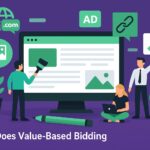Why Lead Generation is Your Business’s Growth Engine
What is lead generation in digital marketing is the process of attracting potential customers and capturing their information using online channels. This strategy turns anonymous website visitors into identifiable prospects who have shown interest in your products or services, forming the foundation of a successful sales pipeline.
Quick Answer:
- Lead generation = identifying and attracting potential customers online
- A lead = someone who has shown interest by sharing contact information
- Digital channels = websites, social media, email, search engines, paid ads
- Goal = fill your sales pipeline with qualified prospects ready to buy
Without a steady flow of interested prospects, even the best businesses struggle. This is why, according to HubSpot, 61% of marketers rank lead generation as their number one challenge. It directly impacts revenue, growth, and long-term sustainability.
In today’s market, mastering digital lead generation provides a significant advantage. It allows you to build a predictable sales pipeline, reduce customer acquisition costs, and create a sustainable growth engine that works for your business around the clock.
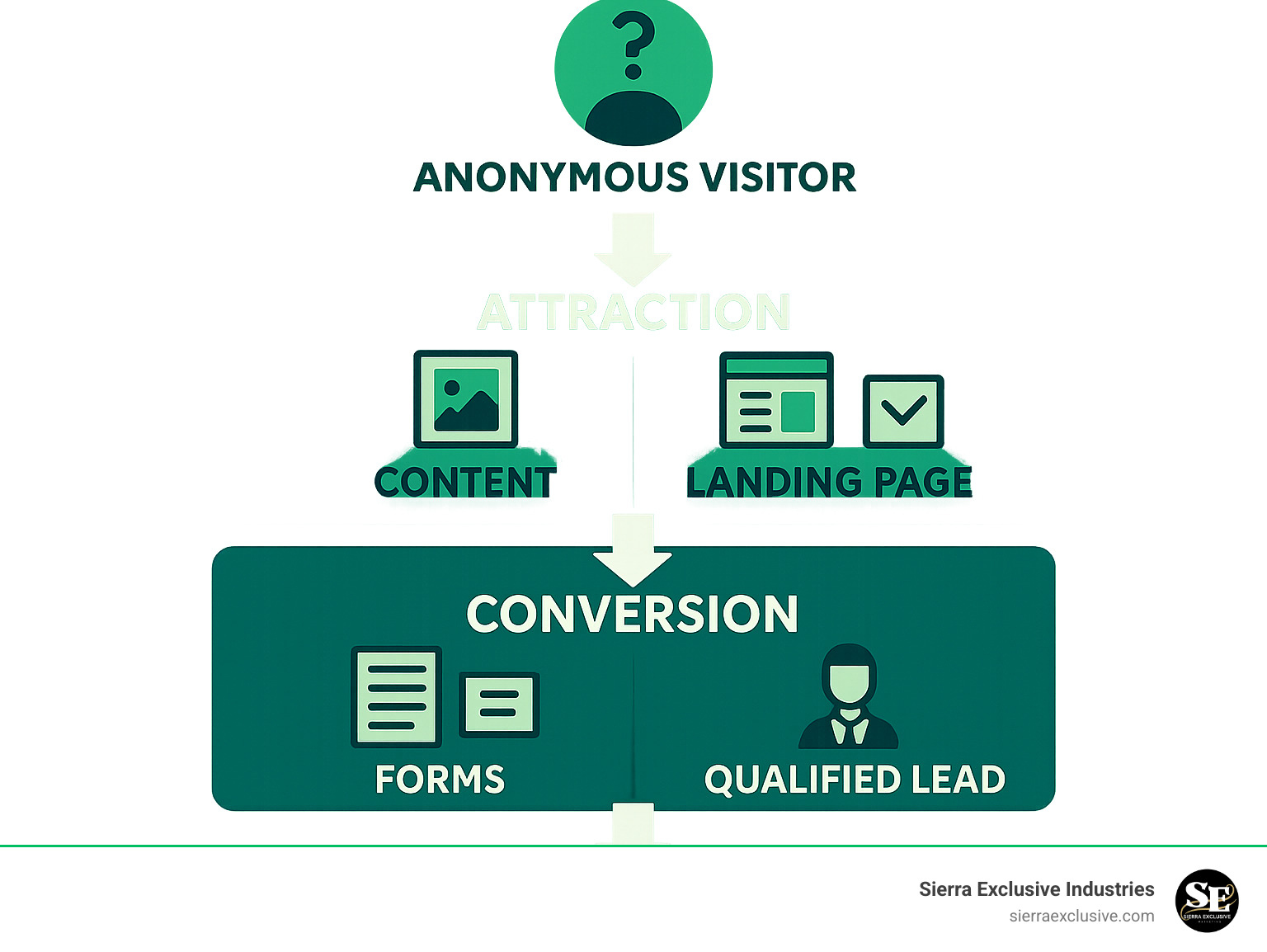
Common what is lead generation in digital marketing vocab:
Why Lead Generation is the Lifeblood of Your Business
Effective lead generation is critical for business success because it connects you with targeted customers who are already interested in what you offer, rather than broadcasting your message to a wide, uninterested audience.
This focused approach delivers several key benefits:
- Increased Brand Awareness: Strategic campaigns get your brand noticed by the right people. You can learn more about how to build brand awareness online to complement these efforts.
- Sustainable Business Growth: A steady flow of leads creates a predictable sales pipeline, allowing you to forecast revenue, plan for expansion, and escape the feast-or-famine cycle.
- Higher ROI and Cost-Effectiveness: Digital lead generation is highly measurable and allows for precise targeting and real-time optimization, delivering more value for your marketing spend compared to traditional methods.
- Long-Term Customer Relationships: By systematically attracting and nurturing leads, you build a foundation for ongoing engagement and loyalty, not just one-time sales.
- Measurable Results: Digital strategies provide clear data on what’s working, changing your marketing from guesswork into a reliable, scalable system for growth.
The Core Process: From Anonymous Visitor to Sales-Ready Lead
Understanding what is lead generation in digital marketing means grasping the process of turning strangers into customers. The rise of digital commerce has refined this into a sophisticated inbound marketing methodology that guides prospects through a predictable customer journey. This journey is often visualized as a funnel with three main stages: Top of the Funnel (TOFU), Middle of the Funnel (MOFU), and Bottom of the Funnel (BOFU).
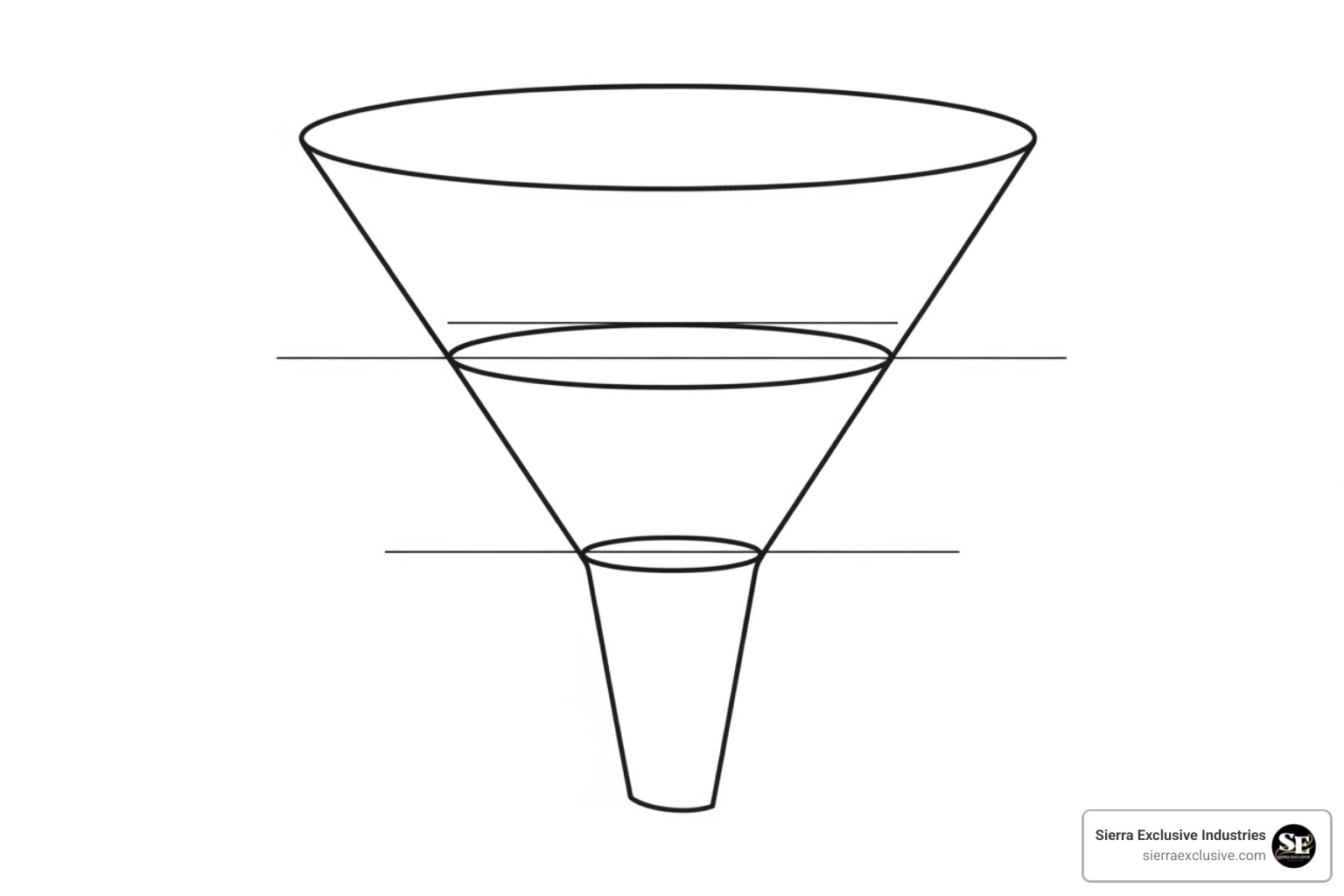
Attracting Your Ideal Audience (Top of Funnel)
The goal here is to turn strangers into visitors by generating quality website traffic. It’s not about random clicks, but attracting people likely to become customers. Key strategies include:
- Search Engine Optimization (SEO): Appearing in search results when potential customers look for solutions. Our ultimate guide to SEO lead generation provides a complete roadmap.
- Content Marketing: Creating valuable blog posts, videos, and guides that solve problems and establish your expertise.
- Social Media: Engaging in conversations and building a community around your brand to foster trust.
- Paid Media: Using targeted ads on platforms like Google and Facebook to get in front of ideal customers quickly.
Converting Visitors into Leads (Middle of Funnel)
This stage involves turning interested visitors into actual leads by offering something of value in exchange for their contact information. The core components are:
- Call-to-Action (CTA): Clear, compelling buttons or links that invite users to take the next step, like downloading a resource.
- Landing Pages: Focused, distraction-free pages designed to persuade a visitor to convert.
- Lead Capture Forms: Simple forms that collect essential contact information without being intrusive.
- Lead Magnets: Irresistible offers like gated content (ebooks, webinars, whitepapers) that solve a specific problem for your audience. Optimizing for traffic conversion is critical here, as small improvements yield significant results.
The Handoff from Marketing to Sales (Bottom of Funnel)
Not all leads are ready to buy immediately. This final stage focuses on lead nurturing to build trust and guide them toward a purchase decision.
- Building Trust: Consistently provide value through case studies, helpful tips, and insights.
- Qualifying Leads: Identify which prospects are most likely to buy so the sales team can focus their efforts effectively.
- Sales Team Alignment: Ensure a smooth transition from marketing to sales, where sales receives all the context on a lead’s interests and behaviors. This collaboration is key to turning marketing efforts into closed deals. For more on this, see our guide to practical sales techniques for agencies.
what is lead generation in digital marketing
Successful what is lead generation in digital marketing relies on strategic channel selection—meeting your ideal customers where they already spend their time online. Instead of being everywhere, focus on the channels that offer the best return for your business.
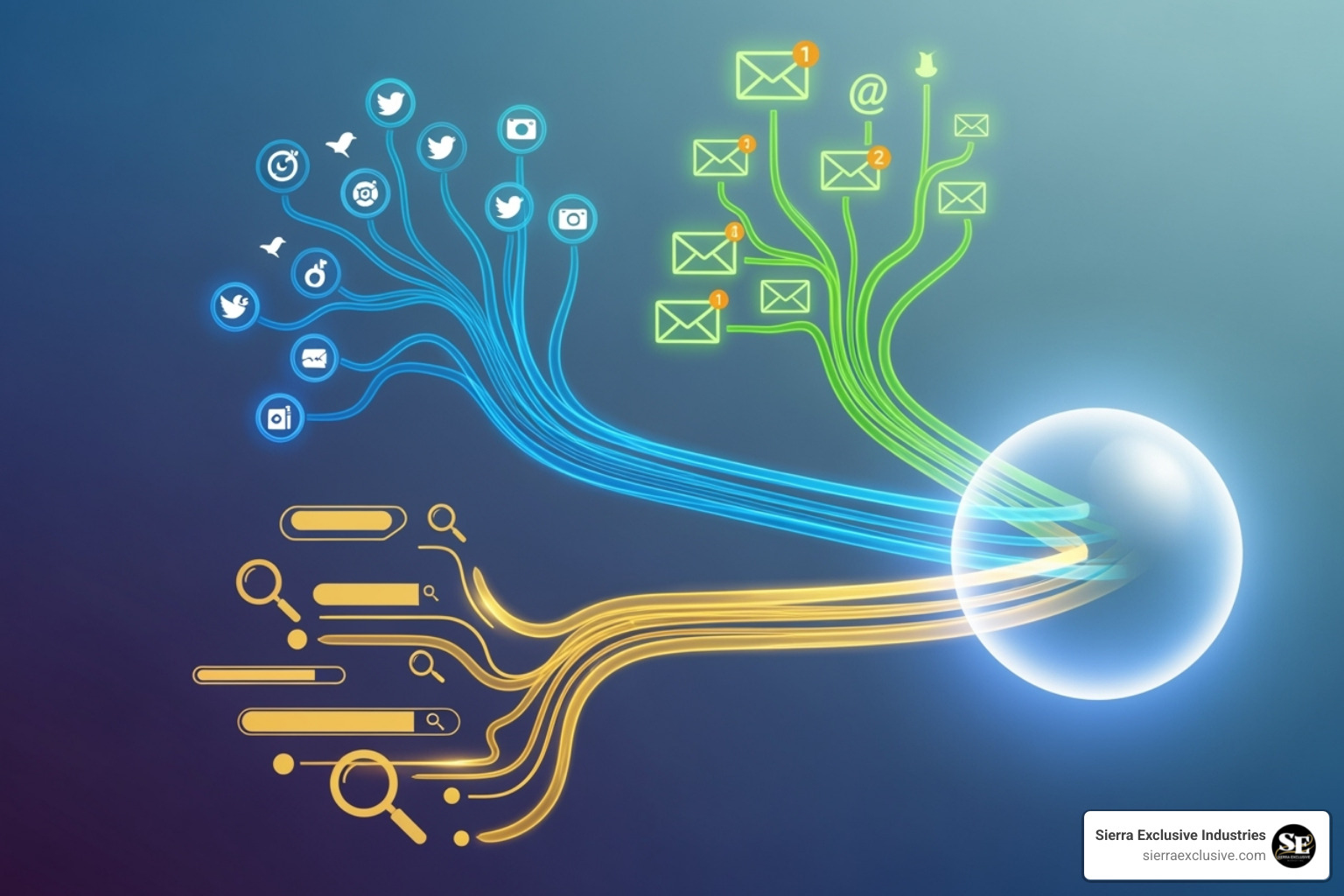
Content Marketing & SEO: The Inbound Powerhouse
Content marketing and SEO work together to attract prospects organically. The goal is to create valuable content (blog posts, videos, ebooks) that helps your audience and follows Google’s E-E-A-T (Experience, Expertise, Authoritativeness, Trustworthiness) guidelines. This positions you as a trusted resource. SEO ensures this content gets found through:
- Keyword Research: Understanding what your audience searches for.
- On-Page SEO: Optimizing content for specific search terms.
- Link Building: Earning credibility from other reputable sites.
This combination is especially powerful for B2B lead generation with SEO. Learn More about Search Engine Optimization (SEO) to see how it can transform your business.
Paid Advertising: Generating Leads on Demand
For immediate results, paid advertising is your express lane to qualified prospects. Key channels include:
- Pay-Per-Click (PPC): Platforms like Google Ads capture users with high buyer intent. Our Google Ads management services help maximize this.
- Social Media Advertising: Platforms like Facebook and Instagram offer deep targeting options to reach specific demographics and interests. We help clients with Meta (Facebook & Instagram) Ads.
- Retargeting: Showing ads to users who have previously visited your site, keeping your brand top-of-mind.
Success in paid advertising comes from hyper-targeting, continuous A/B testing, and a data-driven approach, which is the focus of our lead generation advertising services.
Social Media Marketing: Building Community and Trust
Social media is a powerful channel for building relationships that lead to conversions. Focus on organic reach and community engagement by sharing valuable content and participating in conversations. Social listening helps you understand your audience’s needs, while encouraging user-generated content provides powerful social proof. A surprising 66% of marketers generate leads from social media by dedicating just six hours per week to their efforts. Our social media marketing services help businesses build these meaningful connections.
Email Marketing: The Nurturing Engine
Once you have a lead’s email, you can build a relationship directly in their inbox. Email marketing is essential for lead nurturing. Key tactics include:
- Email Segmentation & Personalization: Dividing your list into groups and tailoring content to their specific interests and needs.
- Drip Campaigns: Automated email sequences that deliver relevant content over time, triggered by user actions.
Marketing automation software makes this process scalable and efficient. With 46% of marketers considering email a key strategy for lead generation, it’s a channel you can’t ignore. Research on B2B email nurturing confirms its effectiveness. Our email marketing services can help you build powerful nurturing sequences.
Sorting the Gold: Lead Qualification, Scoring, and Nurturing
Attracting leads is only the first step. The next crucial phase is to identify which prospects are genuinely ready to buy. This process of lead qualification, scoring, and nurturing requires strong sales and marketing alignment to manage your sales pipeline efficiently. A common framework for this is BANT: evaluating a lead’s Budget, Authority, Need, and Timing.
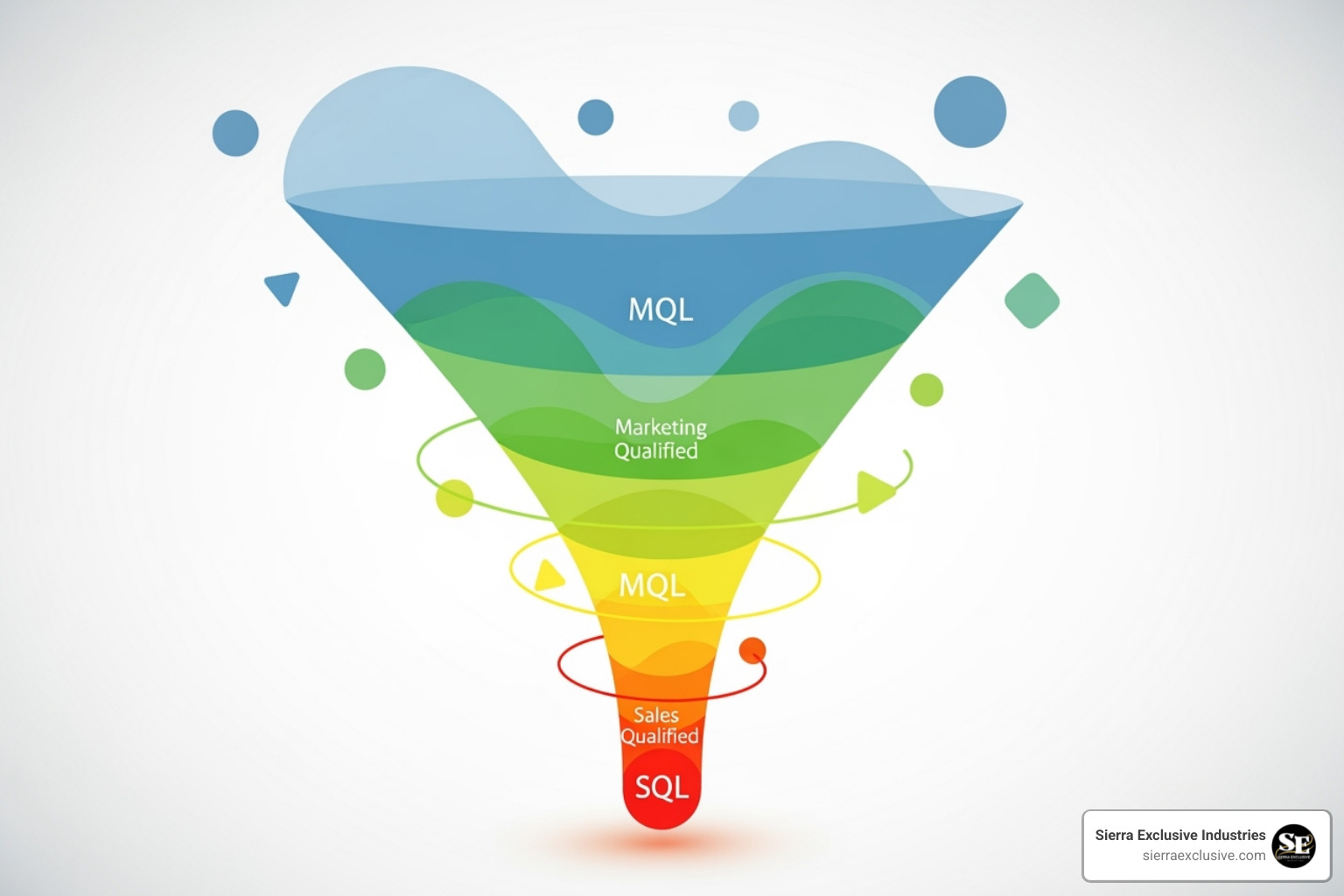
What is lead qualification in digital marketing? (MQL vs. SQL)
Lead qualification is the process of determining a prospect’s likelihood of becoming a customer. Leads are typically categorized to streamline the handoff from marketing to sales:
- Marketing Qualified Lead (MQL): A prospect who has shown interest through marketing engagement (e.g., downloading an ebook) but isn’t ready for a sales call.
- Sales Qualified Lead (SQL): A prospect who has shown direct purchase intent (e.g., requesting a demo) and is ready to speak with the sales team.
- Product Qualified Lead (PQL): A user of a free trial or freemium product who has shown engagement with premium features.
The handoff process from MQL to SQL must be clearly defined to ensure no opportunities are lost. Learn How to qualify leads effectively with our detailed guide.
Understanding Lead Scoring and Grading
Lead scoring automates the prioritizing of leads by assigning points based on their attributes and actions. This data-driven system helps your team focus on the most promising opportunities.
- Behavioral Data: Points are awarded for actions like website visits, email opens, and content downloads. High engagement signals strong interest.
- Demographic Data: Points are assigned based on how well a lead fits your ideal customer profile, considering factors like job title, company size, and industry.
Lead grading (e.g., A, B, C, D) works with scoring to measure a lead’s fit. A lead might have a high score (very engaged) but a low grade (poor fit), helping you further refine your priorities.
The Art of Lead Nurturing: What to do with leads that aren’t ready
Many leads aren’t ready to buy immediately. Lead nurturing is the process of building relationships and staying top-of-mind with these prospects until they are ready. The goal is to provide value and build trust without being pushy. Effective nurturing tactics include:
- Drip Campaigns: Automated email sequences that deliver helpful content over time.
- Retargeting: Displaying ads to keep your brand visible to past website visitors.
- Personalized Content: Tailoring messaging to a lead’s specific interests and needs.
- Webinars and Case Studies: Offering in-depth content that builds credibility and addresses specific pain points.
A solid content promotion plan ensures these resources reach the right leads at the right time.
Measuring Success and Gearing Up for the Future
The power of digital lead generation lies in its measurability. Through analytics, we can make data-driven decisions and continuously optimize campaigns for better performance. We track every interaction to understand what drives results.
Here are the key metrics for measuring lead generation success:
| Metric | Formula | What it indicates |
|---|---|---|
| Cost per Lead (CPL) | Total campaign cost ÷ Number of leads generated | How much you’re spending to acquire each lead |
| Conversion Rate | (Number of conversions ÷ Number of visitors) × 100 | Percentage of visitors who become leads |
| Lead-to-Customer Rate | (Number of customers ÷ Number of leads) × 100 | Quality of your leads and sales process effectiveness |
| Customer Lifetime Value (CLV) | Average purchase value × Purchase frequency × Customer lifespan | Total revenue expected from a customer relationship |
| Return on Investment (ROI) | (Revenue – Investment) ÷ Investment × 100 | Overall profitability of your lead generation efforts |
Essential Tools for Your Lead Generation Toolkit
A successful lead generation machine requires the right software. Key tools include a Customer Relationship Management (CRM) system to act as a central database, email marketing platforms for nurturing, SEO tools for research and tracking, analytics tools for data analysis, and landing page builders for creating high-converting pages. Finding the right digital marketing agency can help you implement this toolkit effectively.
How to measure the effectiveness of what is lead generation in digital marketing
Measuring effectiveness means looking beyond the sheer number of leads. The Key Performance Indicators (KPIs) in the table above provide a complete picture. Cost per Lead (CPL) measures efficiency, while the Conversion Rate shows how well your website performs. The Lead-to-Customer Rate indicates lead quality, and Customer Lifetime Value (CLV) helps determine your acquisition budget. Return on Investment (ROI) tells you if your efforts are profitable.
The Future of Lead Generation: AI, Automation, and Ethics
The lead generation landscape is constantly evolving. Key trends to watch include:
- Artificial Intelligence (AI) & Automation: These technologies are making marketing more precise, enabling personalization at scale and predictive analytics. Explore The future of AI-powered marketing to learn more.
- Conversational Marketing:Chatbots provide instant support and capture leads 24/7. Learn more about Using chatbots for business.
- Video Marketing: Video remains a highly engaging format for connecting with prospects and improving conversion rates.
- Data Privacy & Ethics: With regulations like GDPR and guidance from bodies like the CFPB on transparent marketing, transparency and ethical data handling are non-negotiable.
Success in the future will depend on balancing technological advancement with a genuine focus on solving problems for your customers.


